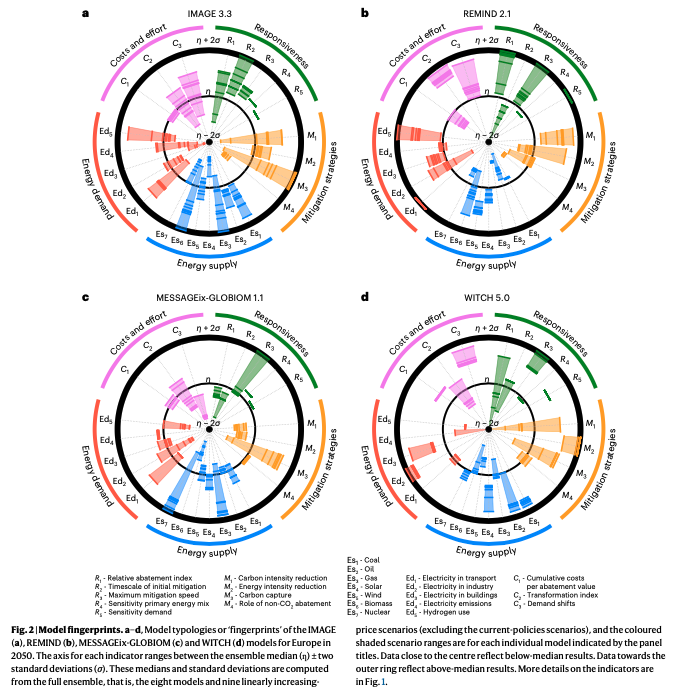
A team of European Climate and Energy Modelling Forum researchers has unveiled a new method to decode intricate energy and climate models. In a recent publication in Nature Energy, they introduce “model fingerprints,” a visual tool simplifying the comprehension of complex models’ key features.
Energy models are crucial to understand emission mitigation pathways and the feasibility of climate targets. They provide us with long-term scenarios of how humanity may consume and produce energy in the future. However, many differences among these models remain, making it difficult for policymakers and stakeholders to understand the pathway to climate neutrality.
To understand these differences, a team of European researchers have developed a method to decode these models using model fingerprints. The fingerprints are a visual tool which allow users to – in a single glance – obtain an overview of a model behaviour.
The researchers ran a set of extreme mitigation scenarios to fully explore the behaviour of eight models: for example, scenarios where biomass is suddenly highly limited, or electrification strongly enhanced. They measured model behaviour using diagnostic indicators across 5 categories: model responsiveness, mitigation strategies, energy supply, energy demand and mitigation costs and effort. The visual comparison of these diagnostic indicators provides the “model fingerprints”.
Project coordinator Will Usher says, “Model fingerprinting fosters transparency and collaboration between policymakers and researchers. We invite interested groups to join the model comparison exercise run by ECEMF and create their own model fingerprint.”
Subscribe to the ECEMF newsletter to ensure that you are notified when ECEMF starts accepting institutional members.
“Computer models are complex to grasp for the wider public, while everyone is affected by the energy transition. This paper marks a step towards understanding these models a bit better. In particular, this paper indicates that studies with only single models should always be perceived in the context of the larger model ensemble.” says lead author Mark Dekker of PBL.
The ECEMF consortium, led by KTH Royal Institute of Technology, comprises 15 partners from 9 countries, including CMCC, IIASA, PIK, TU Wien, e-think, TNO, Fraunhofer ISI, E3M, PBL, Artelys, Comillas, TU Delft, University of Melbourne, and IOS-PIB. ECEMF has received funding from the European Union’s Horizon 2020 research and innovation program under grant agreement No 101022622.
For more information, please visit the following links:
Paper published in Nature Energy: https://www.nature.com/articles/s41560-023-01399-1
European Climate and Energy Modelling Forum (ECEMF): www.ecemf.eu
Code Repository: https://github.com/MarkMDekker/IAMfingerprints
Zenodo (Fixed Publication Release): https://doi.org/10.5281/zenodo.8220167
ECEMF Model Comparison Protocol: https://doi.org/10.5281/zenodo.6811317
ECEMF Scenario Data @ IIASA: https://data.ece.iiasa.ac.at/ecemf/
Zenodo (v1.0 Scenario Data): https://doi.org/10.5281/zenodo.7634845


